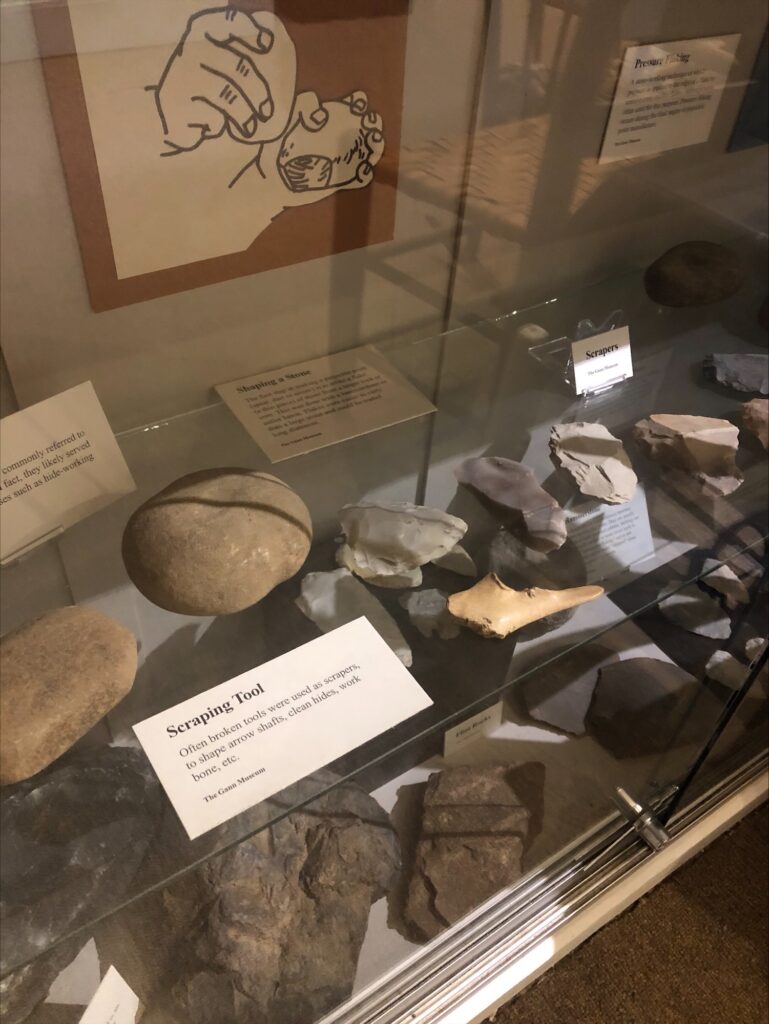Native Saline County
By Cody Berry

Since November is Native American Heritage Month, I thought I’d highlight some of Saline County’s first residents. Arkansas has a rich and colorful history, but it didn’t start with the first Europeans settling here. When Hernando De Soto and his conquistadors crossed the Mississippi River on June 28, 1541, they met several tribes in what is now Arkansas.1 Fast forward to 1819, English naturalist Thomas Nuttall wrote that there were “nine or ten families at Saline Crossing.” and that the land was “fertile enough and healthy enough” to attract settlers.2
Saline County was home to the Quapaw and Caddo tribes who like other tribes were forcibly removed from their homelands. Those tribes were not building tipis along the river or chasing buffalo which are images that might come to mind thanks to films like Dances with Wolves. Quapaw and Osage Indians lived in bark-covered longhouses in clan neighborhoods. The Caddo also lived in clan groups, but their houses were tall, circular structures covered with grass thatch.3 They were more like farmers than wanderers.
In 1831, Congress gave William Lockhart permission to operate a toll bridge over the Saline River at a time when Indian Removal was happening. On January 4, 1832, the Arkansas Gazette reported that “a party of Choctaws” who had left Camp Pope in Little Rock “had left the Saline, 30 miles south of this, on Saturday morning last, and were proceeding on very finely when last heard from.”4 In November 1832, removal agent S.T. Cross reported that he had left camp and travelled across “Saline creek.” He said that there were “few cases of sickness.” That winter was one of the coldest on record and there was a cholera epidemic which had killed many Indians. In August 1837, removal agent John M. Millard and some of the Chickasaw tribe made camp along the Saline River near Benton. Millard stayed at Lockhart’s house and at the home of Joseph Clift, from whom Millard bought fresh beef, corn, and salt.5
The Gann Museum has a collection of Native American artifacts in the Williams Gallery. We have some arrowheads, pottery, and stone tools as well as some information about the formation of Saline County in November 1835. The City of Benton has a dugout canoe at the River Center known as the Peeler Bend Canoe. It was found by chance in 1999.6
We at the Gann Museum wish you and your family a very happy Thanksgiving.
Citations:
1 Jeffrey M. Mitchem, “Hernando de Soto (1500? – 1542), CALS Encyclopedia of Arkansas, https://encyclopediaofarkansas.net/entries/hernando-de-soto-1770/, Date Accessed 11/7/2024.
2 Cody Lynn Berry. “Saline Crossing,” CALS Encyclopedia of Arkansas, https://encyclopediaofarkansas.net/entries/saline-crossing-saline-county-13515/, Date Accessed 11/7/2024.
3 George Sabo III, “Native Americans,” CALS Encyclopedia of Arkansas, https://encyclopediaofarkansas.net/entries/native-americans-408/, Date Accessed 11/7/2024.
4 Cody Lynn Berry. “Saline Crossing,” CALS Encyclopedia of Arkansas, https://encyclopediaofarkansas.net/entries/saline-crossing-saline-county-13515/, Date Accessed 11/7/2024.
5 Cody Lynn Berry. “Saline Crossing,” CALS Encyclopedia of Arkansas, https://encyclopediaofarkansas.net/entries/saline-crossing-saline-county-13515/, Date Accessed 11/7/2024.
6 Cody Lynn Berry, “Peeler Bend Canoe,” CALS Encyclopedia of Arkansas, https://encyclopediaofarkansas.net/entries/peeler-bend-canoe-12502/, Date Accessed 11/7/2024.
